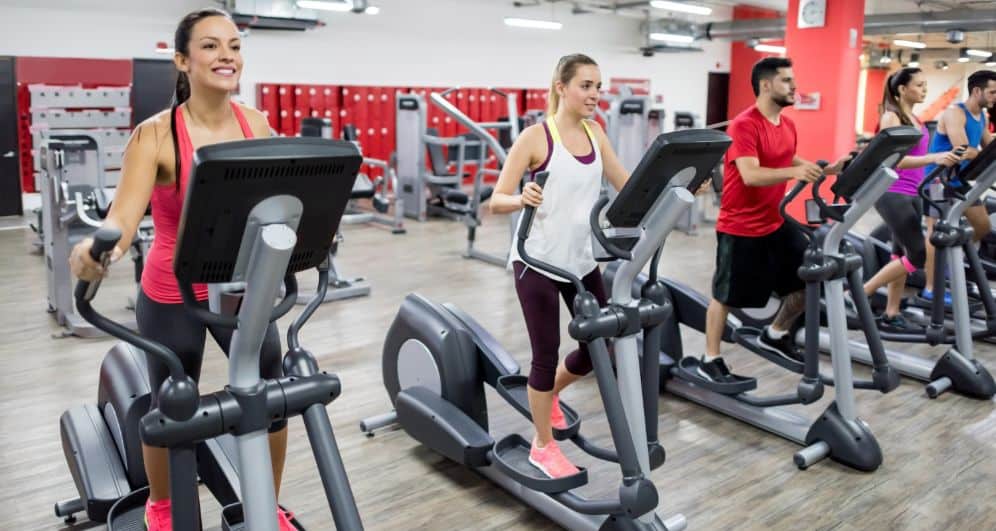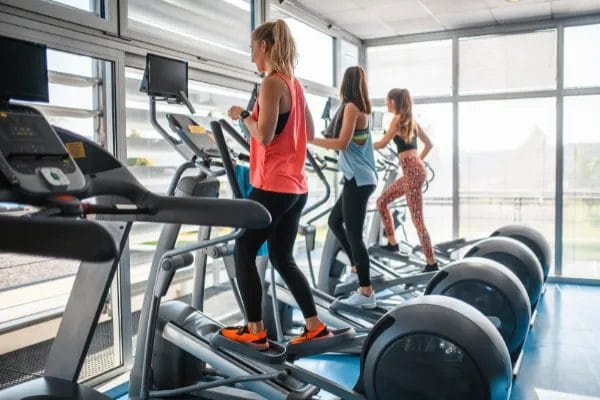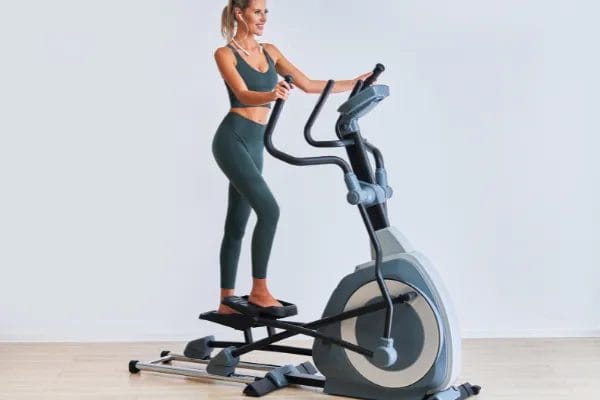
When finding the perfect cross trainer, you will have to narrow down the types of trainer you want, as different cross-trainers will use different kinds of resistance depending on the model you buy.

Cross trainers can come using magnetic resistance which often gives higher levels of resistance and is easier to adjust while flywheel models are much more affordable on the market.
To help you decide which type of cross trainer is right for you we have compared both a magnetic cross trainer and flywheel trainers below.
The flywheel inside of a cross trainer is the drive mechanism for the machine, this wheel starts to move when the users start to turn the pedals with their feet. It also controls the resistance levels of your machine in order for you to progress.
You might have noticed that cross trainers differ in flywheel size too. They tend to be between 4-10kg and the heavier your flywheel is, the more durable your machine will be, hence why cross-trainers with a heavier flywheel are often more expensive.
Magnetic cross trainers are in the higher elliptical trainer price range and operate with magnets on their flywheel the closer these magnets are to the flywheel then the higher the resistance is. You can typically adjust the magnetic resistance levels easily on your model with buttons to increase or decrease.
Both magnetic and flywheel cross trainers have a similar design and operate the same with the goal of producing varying types of resistance so as you can get your sweat on.

We will compare both the advantages and disadvantages of these cross trainers below to see which model might be best for you.
First off, let's discuss magnetic cross trainers. These magnetic resistance mechanisms on cross trainers tend to be slightly more accurate than flywheel systems hence why their manufacturing costs are higher than their computerised systems.

These cross trainers allow you to get stronger resistance levels too and have little typical repair costs compared to flywheel models. Due to the magnetic resistance machines system, it also reduces the amount of noise your model has.
Disadvantages of mechanically-adjusted magnetic resistance cross trainers are that this system is always more expensive and is often found mostly in professional gyms.
Flywheel cross trainers are much more affordable than magnetic cross trainers and are still as easy to adjust as magnetic trainers. These cross trainers still have good levels of resistance and are fairly accurate.

The negatives of these cross trainers are that their control on-resistance is much nosier, they also tend to have higher repair costs.
Overall, mechanically-adjusted magnetic resistance cross trainers do have a few more advantages over flywheel cross trainers such as accuracy and better resistance, but flywheel cross trainers still provide good features and a decent workout for those of us on a budget.
What is a front-driven cross trainer?

A front-drive cross trainer operates with a flywheel at the front of the machine and has a flatter movement. You can compare the front drive and rear drive cross trainer here to understand better what the front drive is capable of.
Which features should I look for in my cross-trainer?
Some important features to consider in your trainer are; resistance levels, max user weight, the flywheel, display, programmes and resistance control.
What does the stride length mean on an elliptical?
Stride length on your trainer refers to the distance between the front of your foot and the front of your rear foot on your machine. Make sure your stride length is long enough or adjustable on your cross trainer otherwise they can feel awkward to workout with.
How does air resistance elliptical trainers work?
Air resistance elliptical trainers work with a fan inside to create resistance, they are one of the oldest forms of cross trainers out there and the air resistance mechanism is not very durable for long term use, it can be quite noisy too.
Overall, no matter which type of cross trainer you decide, both types will give you an excellent workout. If you are after durability and high-quality resistance, then magnetic cross trainers would be the ideal choice. However flywheel trainers are perfect for at-home gyms too, just make sure your flywheel is of the right size.
If you want to burn more calories but are still undecided about the exercise equipment, here's a comparison between a cross trainer and a rowing machine.
Contents
errr dont they all come with a flywheel and magnetic resitance ?
Flywheel
9kg
Resistance
24 Electronic Resistance Levels